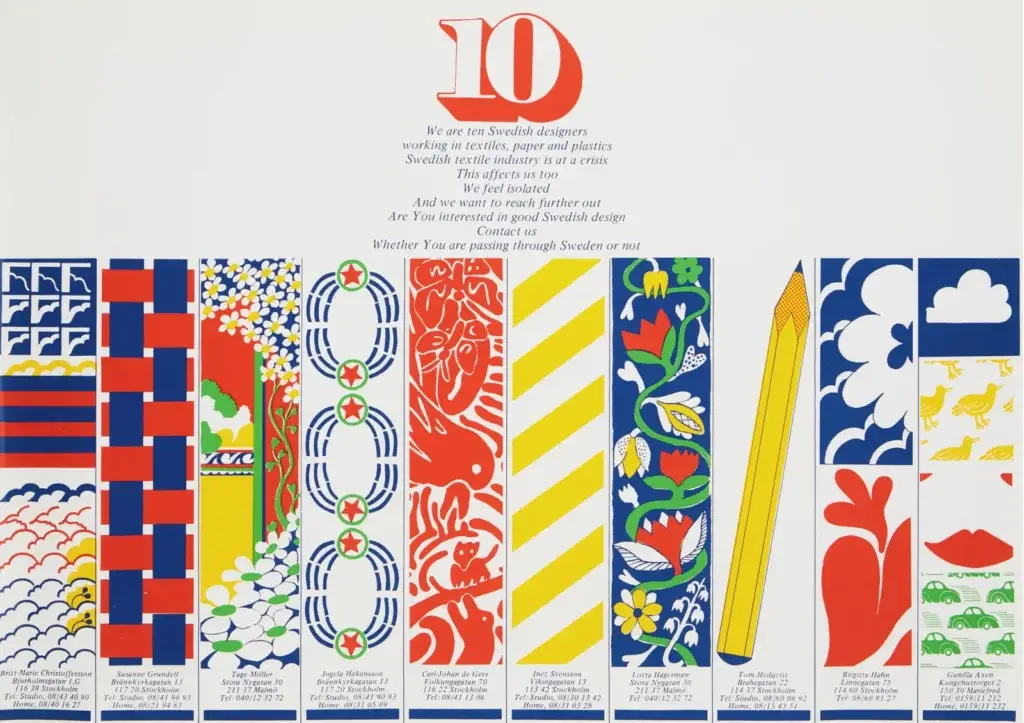THE RICH HISTORY OF SCANDINAVIAN SURFACE PATTERN DESIGN : A JOURNEY THROUGH MINIMALISM AND NATURE
Scandinavian design has long been admired for its simplicity, functionality, and deep connection to nature. This aesthetic is not limited to furniture or architecture; it has permeated the world of print design and surface pattern design.
Over the decades, Scandinavian print design has become synonymous with minimalism, soft color palettes and organic forms. All of which reflect the Nordic region’s landscapes and cultural values.
This article will take you on a journey through the history of Scandinavian print design, exploring its evolution and the elements that make it timeless.
The Origins: Nature as inspiration
The roots of Scandinavian design are steeped in a deep respect for the natural world. The Nordic countries — Denmark, Sweden, Norway, Finland, and Iceland — have long winters and expansive, unspoiled landscapes, which have greatly influenced their cultural identity. This connection to nature began to manifest in patterns for textiles and other designs during the late 19th century as part of the Arts and Crafts Movement.
One of the key influences in Scandinavian pattern and design was William Morris, whose philosophy of craftsmanship and a return to natural forms resonated deeply with Scandinavian designers. Early surface pattern designs featured intricate patterns inspired by flora and fauna, reflecting the simplicity and beauty of the Scandinavian wilderness.

The Rise of Functionalism
As the early 20th century rolled in, the Scandinavian print design world was swept by the Functionalist movement. Functionalism sought to strip away unnecessary ornamentation, focusing on designs that served a purpose while remaining aesthetically pleasing. The emphasis on “less is more” became a key tenet of Scandinavian design, and this translated beautifully into print design.
Scandinavian pattern and design began to adopt cleaner lines and more geometric shapes, but the connection to nature was never lost. Functionalism encouraged designers to create work that was both functional and emotionally resonant. Prints from this era, such as those by Swedish designer Josef Frank and Gocken Jobs combined structure with playful, organic elements like vines, trees, and birds. This was a reflection of both the influence of nature and the modernist desire for order.
Post-War Modernism: Bold colours and organic patterns
Image: Stig Lindbergs Lustgården, Marimekkos Unikko, Viola Gråsten
The post-World War II era brought Scandinavian design to the world stage, with a focus on simplicity and democratization of design. The Scandinavian countries had come through the war relatively unscathed compared to the rest of Europe, allowing them to quickly rebuild and develop a design identity that became highly influential. Pictured below is the print “Oomph” by Finnish textile designer Viola Gråsten from 1952 designed during her employment at Nordiska Kompaniet in Stockholm.

In the 1950s and 60s, print design in Scandinavia experienced a creative explosion. Designers like Marimekko‘s Maija Isola in Finland introduced bold, colorful patterns for textiles that broke away from the muted tones of early functionalist designs. These new prints embraced more abstract, organic forms inspired by nature yet remained true to the core values of Scandinavian design: simplicity, functionality, and a sense of harmony.
Marimekko’s “Unikko” print, designed in 1964, is one of the most iconic examples of this era. The large-scale, stylized poppy flower motif is both playful and sophisticated, combining a modern aesthetic with the timeless beauty of nature. Scandinavian surface pattern design during this time became synonymous with cheerful, vibrant patterns that were simultaneously practical and decorative.
“Unikko” has been used for a multitude of products, latest is the circular denim collection Maridenim as pictured below.
The Scandinavian Minimalism of the Late 20th Century
As the mid-century era gave way to the late 20th century, Scandinavian design evolved again. The 1970s and 80s saw a return to minimalism, though this time it was infused with the warmth and organic feel that had always characterized Scandinavian aesthetics.
Print design from this period began to embrace neutral color palettes — soft whites, greys, and natural hues dominated. Textures became a key element, and minimalist patterns, often inspired by geometry such as Swedish 10-group, reigned supreme. Designers like Alvar Aalto and Arne Jacobsen led the way in architecture and product design, and their influence could be seen in surface pattern design as well.

Prints became quieter but more tactile. There was a focus on craftsmanship, with many designers choosing to work with natural materials like linen and cotton, imbuing their prints with a handcrafted quality that elevated minimalism beyond mere austerity. In this era Swedish company Norrgavel was born. The balance between form and function was maintained, and Scandinavian pattern and design continued to capture the essence of Nordic life — calm, understated, and deeply connected to nature.
Contemporary Scandinavian Print Design: A blend of tradition and innovation
Today, Scandinavian print design remains as influential as ever, continuing to evolve while honoring its rich heritage. Contemporary designers have embraced digital technology, but the heart of Scandinavian design — simplicity, nature, and functionality — remains unchanged.
Modern surface pattern design often blends traditional motifs, like stylized flora and fauna, with new materials and techniques. Sustainability is now a major focus, with many Scandinavian designers prioritizing eco-friendly production processes and materials in their work. Brands like Mini Rodini, Ferm Living and HAY have led the charge in creating modern patterns for textiles that feel both timeless and fresh.
The contemporary Scandinavian aesthetic has become a global phenomenon, seen in everything from fashion to home décor. And with print designs continuing to reflect the simplicity, beauty, and functionality that have always defined Nordic design.









